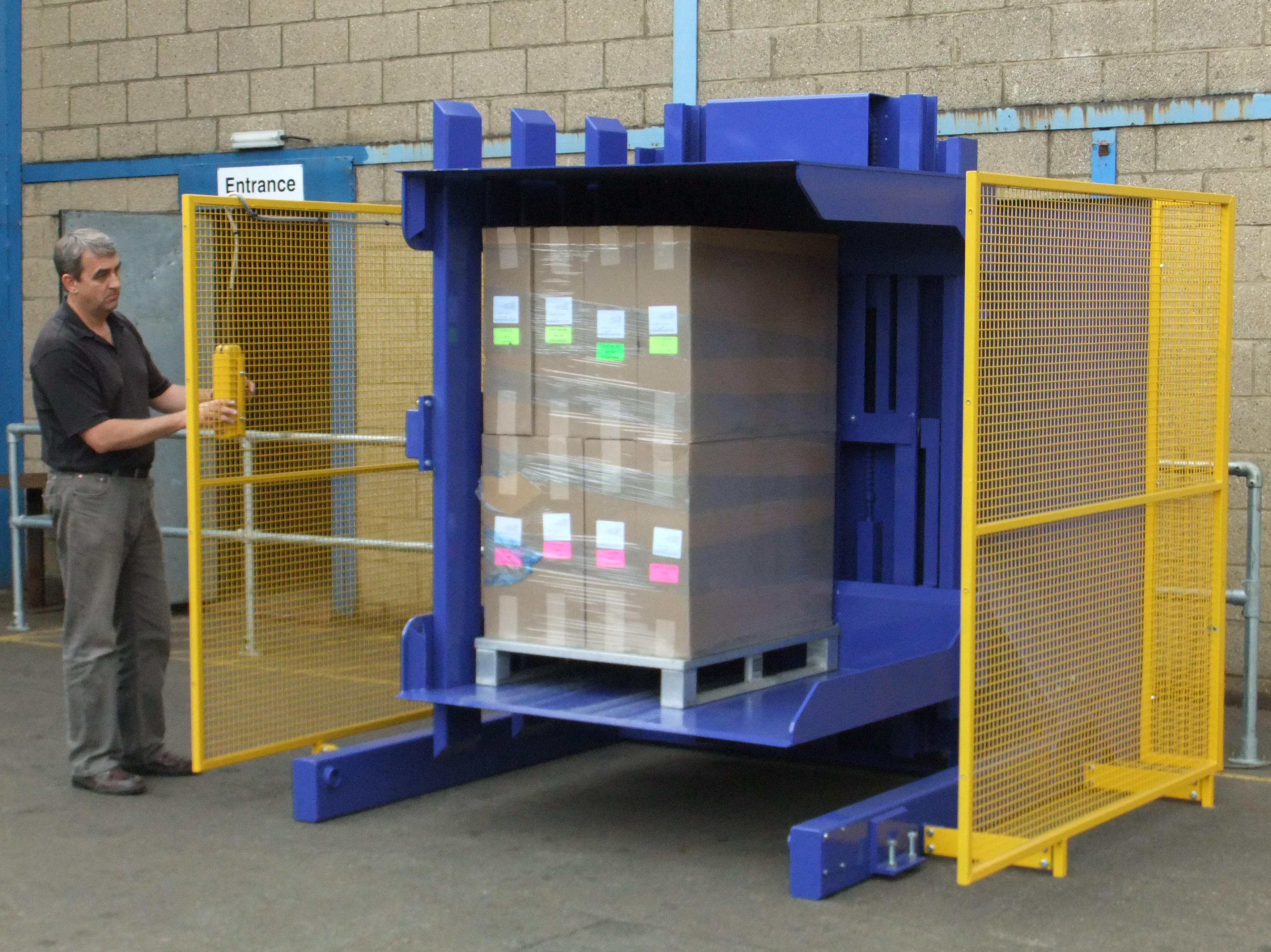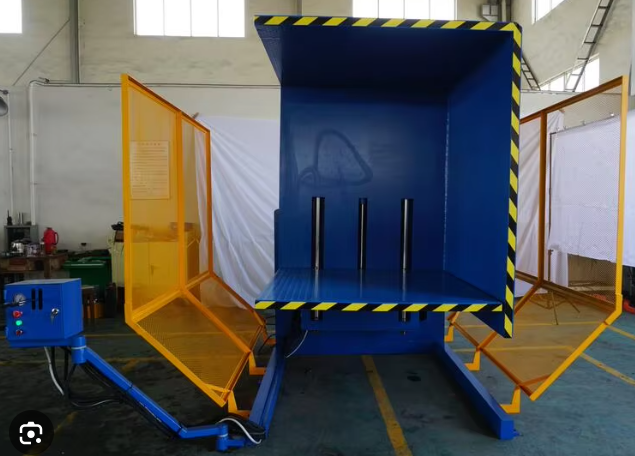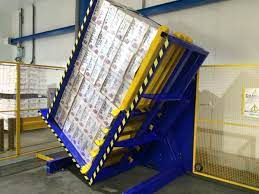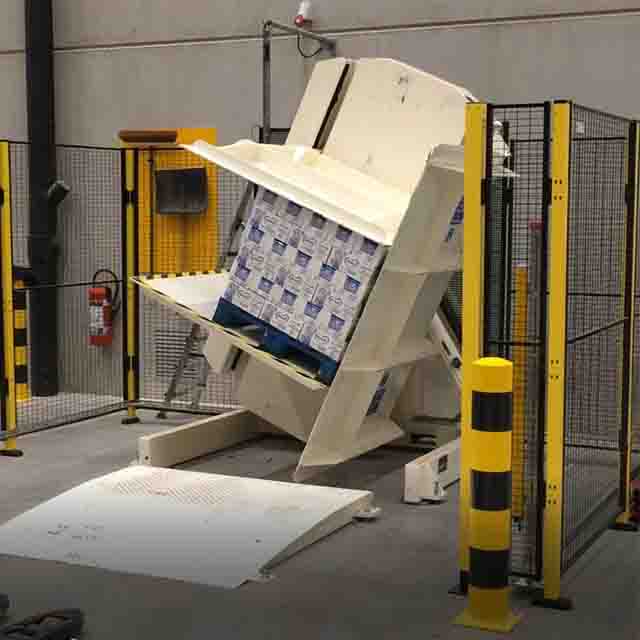What’s the ROI of Automated Pallet Changing Machines in Turkey's Cold Sector?
Are you constantly battling rising operational costs in your facility? In demanding environments like Turkey's cold sector, or even in large-scale steel production, every minute of downtime and every damaged product directly hurts your bottom line. You invest in advanced production machinery, but the final step—packaging and handling—often remains a manual, inefficient bottleneck. This creates safety risks, slows down your entire operation, and feels like a problem with no simple solution. I've seen this challenge firsthand in countless factories. But what if you could transform this final step from a liability into a source of efficiency and savings? A robust automated pallet changing machine is that solution, designed to streamline your logistics and protect your products.
Automated pallet changing machines in demanding sectors like Turkey's cold industry typically offer a return on investment (ROI) within 12 to 24 months. This rapid payback is achieved through a powerful combination of factors: a drastic reduction in manual labor costs, a near-elimination of product damage during handling, and a significant decrease in operational downtime. For any manager focused on numbers, this investment quickly proves its worth on the balance sheet.

I understand that a simple ROI figure isn't enough for a leader like you. You need to see the full picture. After all, a machine is more than just its purchase price. It’s an integral part of your entire production ecosystem. So, let’s go beyond the basic numbers. We will explore how this technology directly addresses core operational challenges, from labor and material costs to throughput and long-term strategic goals like digitalization. Let's break down how this single investment can create value across your entire operation.
How Do Automated Pallet Changers Directly Reduce Operational Costs?
Are your labor and material costs slowly eating away at your profit margins? You likely spend a significant amount on wages for manual handling tasks, and even more when accidents happen. A single dropped pallet of finished goods can wipe out the profit from an entire production run. The cost of damaged products, worker compensation claims, and managing an inventory of expensive, high-quality pallets adds up quickly. I remember a client who accepted a 2% product damage rate as a "cost of doing business." This is a problem you don't have to accept. The solution is to remove the manual, unpredictable variables from your process with reliable automation.
Automated pallet changers directly reduce operational costs by minimizing manual labor requirements by up to 80%, cutting product damage rates by over 90%, and lowering expenses related to wooden pallet quality and rentals. This technology tackles three major cost centers at once, delivering a clear and measurable financial benefit from the first day of operation.

Let's dive deeper into the specific ways this equipment impacts your budget. A decision to invest must be backed by a clear understanding of the savings. As an engineer who has built these machines and helped factories implement them, I focus on tangible results. It's not about fancy features; it's about how the machine performs in a real-world, high-pressure environment.
A Breakdown of Cost Reductions
The most immediate saving comes from labor. A manual pallet exchange often requires two workers and a forklift. The process is slow and exposes your team to risks. An automated pallet changer, or pallet inverter, reduces this to a single operator who can manage the process in a fraction of the time. This doesn't mean firing your team. It means you can reassign skilled workers to more value-added roles, like quality control or machine maintenance, which directly contributes to your goal of improving overall efficiency.
The second major saving is in product damage. I once visited a steel wire factory where forklift drivers had to carefully maneuver heavy, unstable coils. Mistakes were common and very expensive. Our pallet inverter solved this by using a secure clamping system and a controlled 180-degree rotation. The load is held firmly in place throughout the entire process. This gentle but strong handling virtually eliminates the risk of dropped or damaged goods.
Finally, consider your pallet costs. You might be forced to ship products on high-quality, expensive pallets to meet customer requirements. Or you might be using cheap, one-way pallets that often break and cause problems. A pallet changer allows you to use durable, high-quality pallets for internal use and switch to standard, less expensive shipping pallets just before dispatch. This simple change can save thousands of dollars a year in pallet procurement and management.
Here is a simple comparison:
| Cost Factor | Manual Process | Automated Process | Estimated Annual Savings (Example) |
|---|---|---|---|
| Labor | 2 workers, 5-10 mins/pallet | 1 operator, <1 min/pallet | $50,000+ |
| Product Damage | 1-3% of handled goods | <0.1% of handled goods | $30,000+ |
| Pallet Costs | Use of expensive pallets for all stages | Optimized use of internal and shipping pallets | $15,000+ |
| Forklift Use | High traffic, fuel/maintenance costs | Reduced traffic, lower costs | $5,000+ |
These numbers are not just theoretical. They are based on the results I have seen my clients achieve. By automating this one critical step, you directly attack major operational costs and pave the way for a more profitable operation.
Can Pallet Inverters Really Improve Throughput and Uptime?
Does your shipping department ever feel like a traffic jam? You have products ready to go, but they are stuck waiting to be transferred to the right pallet. This bottleneck slows down your entire facility. A delay in the final packaging stage can ripple backward, forcing your multi-million dollar production lines to slow down or even stop. This directly threatens your goal of achieving 95% equipment uptime. You need a way to create a smooth, predictable, and fast flow of goods out the door. The solution lies in making the pallet transfer process as fast and reliable as your production lines.
Yes, pallet inverters significantly improve throughput and uptime. By automating the pallet exchange process, they can reduce cycle times from several minutes of manual work to under 60 seconds. This removes a major bottleneck in your logistics chain. A faster, more reliable packaging stage means your production lines can run at their full potential, directly helping you achieve higher equipment effective run time and overall plant productivity.

Improving throughput is about more than just moving faster. It is about creating a predictable and dependable system. When I started my own factory, I learned that consistency is just as important as speed. An unpredictable process, even if it's occasionally fast, makes planning impossible. Let's examine how a pallet inverter brings both speed and consistency to your operation.
From Bottleneck to Free-Flowing Channel
The core benefit here is the reduction in cycle time. Think about the steps involved in a manual pallet exchange. A forklift driver must find the load, carefully lift it, transport it to a staging area, and then another team must somehow lift the product stack to swap the pallet. This is slow, requires coordination, and has many points of failure. An automated pallet inverter simplifies this into a single, seamless action. The pallet load enters, is securely clamped, rotated, and exits with the new pallet in place.
Here is a step-by-step time comparison:
| Manual Pallet Exchange Steps | Time (Approx.) | Automated Pallet Inverter Steps | Time (Approx.) |
|---|---|---|---|
| Locate and signal forklift | 1-2 minutes | Operator places pallet with forklift/conveyor | 15 seconds |
| Forklift travels to load | 1 minute | Machine cycle starts (clamping, inverting) | 30 seconds |
| Manual re-stacking/lifting | 3-5 minutes | New pallet is placed, machine cycle finishes | 15 seconds |
| Forklift removes new pallet | 1 minute | Operator removes new pallet | - |
| Total Cycle Time | 6-9 minutes | Total Cycle Time | < 1 minute |
This time saving has a massive impact. If you process 100 pallets a day, you are saving over 8 hours of operational time every single day. That is an entire work shift. This is how you clear bottlenecks.
This new efficiency directly supports your production uptime. I worked with a steel mill owner who faced this exact issue. His advanced rolling mills could produce coils faster than his packaging team could handle them. The yard was filled with finished products waiting to be shipped. By installing two heavy-duty pallet inverters at the end of his lines, he synchronized his logistics with his production speed. His uptime increased because the production line no longer had to wait for the packaging team. This is a crucial step for any business leader, like Javier, who wants to maximize the return on their primary production assets.
What Are the Integration Challenges and Long-Term Maintenance Costs?
You are a practical leader. You know that a new machine's sticker price is just the beginning of the story. You have to ask the tough questions: Will this equipment work with my existing systems? What will it cost to maintain over the next 10 years? A machine that causes integration headaches or requires constant, expensive repairs can quickly turn a promising ROI into a financial disaster. You are looking for a reliable partner, not just a piece of equipment. You need a solution that fits seamlessly into your factory and a supplier who will stand behind their product for the long haul.
The primary integration challenges involve interfacing the pallet changer with your existing conveyor systems and factory-wide safety protocols. This requires careful planning. Long-term maintenance costs are surprisingly low, typically amounting to only 1-2% of the initial investment per year. This is because these machines are built for durability, and a simple preventative maintenance schedule, supported by a good supplier, ensures decades of reliable service.

When I founded SHJLPACK, my mission was to be a total solution provider. I didn't want to just sell machines. I wanted to share the knowledge I gained over my career to help my clients succeed. That means being honest about the challenges and providing clear guidance on how to overcome them. Let's look at integration and maintenance with that same practical mindset.
Planning for a Smooth Integration
A pallet changer doesn't operate in a vacuum. It needs to connect to the rest of your factory. The first challenge is physical integration. We need to ensure the machine's infeed and outfeed conveyors match the height and speed of your existing lines. This might require minor adjustments or custom-built transition sections. We always conduct a site survey to map out the physical layout and plan for a smooth installation.
The second challenge is digital integration. Your factory likely has a centralized control system (PLC) and safety network. Our machines need to "talk" to your system. This involves programming handshakes—signals that say "I am ready for a pallet" or "I have finished the cycle." It also means integrating our machine's safety features, like light curtains and emergency stops, into your plant-wide safety circuit. This is where having an experienced partner is critical. We work directly with your engineers to ensure the machine becomes a natural, safe extension of your production line.
A Realistic Look at Long-Term Maintenance
No machine runs forever without care. But a well-designed machine makes maintenance simple and inexpensive. Our design philosophy focuses on two things: durability and accessibility. We use heavy-gauge steel, high-quality hydraulic components, and reliable motors to withstand the demands of an industrial environment. We also design our machines so that key components are easy to access for inspection and service.
Here is a typical preventative maintenance schedule:
| Frequency | Task | Estimated Time |
|---|---|---|
| Daily | Visual inspection, check for leaks, clean sensors | 5 minutes |
| Monthly | Lubricate moving parts (chains, bearings) | 15 minutes |
| Annually | Check hydraulic fluid, inspect hoses, test safety circuits | 2-3 hours |
The parts that require eventual replacement—like hydraulic hoses or motor bearings—are standard industrial components. You can source them easily, which keeps your total cost of ownership low. This is a stark contrast to some equipment that requires expensive, proprietary parts. As a former factory engineer, I know how frustrating that can be. That's why we build our machines to be both tough and easy to maintain. This approach ensures your investment continues to pay dividends for many years to come.
How Do These Machines Support Digitalization and Environmental Goals?
As a forward-thinking leader, your goals go beyond daily production numbers. You're focused on building a factory for the future—one that is smarter, more efficient, and more sustainable. You face growing pressure from regulators to meet environmental standards, and you see the immense potential of digital transformation. But it's hard to implement a "smart factory" concept when key processes are still manual. These old methods create data gaps and generate unnecessary waste, working directly against your strategic objectives. The solution is to invest in equipment that is not only efficient but also intelligent and eco-friendly.
Modern automated pallet changers are a key enabler for both digitalization and environmental goals. They support digitalization by providing a stream of valuable data for your MES and IoT platforms. On the environmental side, they contribute significantly by enabling the large-scale reuse of internal pallets, which reduces timber consumption and landfill waste. They also minimize product scrap by preventing handling damage, directly supporting your sustainability initiatives.

Helping clients modernize their factories is one of the most rewarding parts of my work. It's not just about selling a machine; it's about helping them take a concrete step toward their long-term vision. Let's explore how this single piece of equipment can be a powerful tool for achieving your goals in digitalization and environmental compliance.
A Stepping Stone to Industry 4.0
A modern pallet changer is more than just moving steel. It's a source of data. Our machines are equipped with sensors that track key metrics:
- Cycle counts
- Operating hours
- Fault codes and diagnostics
- Energy consumption
This data can be fed directly into your Manufacturing Execution System (MES) or a central data analysis platform. For a CEO like Javier, who wants to achieve comprehensive production visualization, this is invaluable. You can see exactly how many pallets are processed per shift, monitor equipment health to predict maintenance needs, and track performance against your targets. This turns a logistics machine into a smart node within your digital factory, providing the reliable data you need for intelligent scheduling and predictive maintenance—getting you closer to that 95% uptime goal.
Driving Your Sustainability and Safety Agenda
Your commitment to environmental standards and worker safety is a critical part of your business strategy. An automated pallet changer is a powerful asset in this area.
First, it champions the "reduce, reuse, recycle" model. By allowing you to reuse durable plastic or high-quality wooden pallets internally for years, you drastically reduce the demand for new, single-use wooden pallets. This has a direct positive impact:
- Reduces Deforestation: Less demand for cheap pallet wood.
- Lowers Waste: Keeps thousands of broken, disposable pallets out of landfills.
- Minimizes Scrap: By preventing product damage, you reduce the energy and raw materials wasted in producing replacement goods.
Second, it fundamentally improves workplace safety. The area around a pallet changer has significantly less forklift traffic. The machine contains the heavy lifting and rotation within a secure, guarded zone. This drastically reduces the risk of the most common and severe types of industrial accidents, such as collisions, dropped loads, and repetitive strain injuries. For a leader concerned with the well-being of his team, this is not just a benefit—it's a responsibility.
| Strategic Goal | How an Automated Pallet Changer Contributes |
|---|---|
| Digitalization | Provides real-time data on throughput and machine status for MES/IoT platforms. |
| Environmental Compliance | Enables pallet reuse programs, reduces wood consumption, and minimizes product waste. |
| Energy Reduction | Modern, efficient motors consume less power; less scrap means less energy wasted on remanufacturing. |
| Workplace Safety | Eliminates dangerous manual lifting and reduces forklift traffic in congested areas. |
This investment demonstrates to your customers, employees, and regulators that you are building a modern, responsible, and forward-looking company.
Conclusion
Automated pallet changers offer more than just a simple ROI. They are a strategic investment in efficiency, safety, and creating a future-ready operation ready for new challenges.



